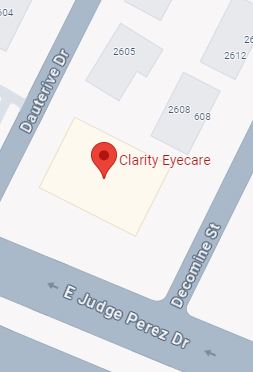Contact Lenses for "Hard to Fit" Patients
Helping You See With Clarity
It is rather common for some of our patients to have a hard time finding a proper-fitting contact lens. This can be due to a number of reasons, such as the eye shape, any types of eye conditions, or even the results of a surgery.
You may be considered a “hard-to-fit” patient if you deal with any of the following conditions:
- Dry eyes
- Astigmatism
- Giant Papillary Conjunctivitis (GPC)
- Keratoconus
- Pellucid Marginal Degeneration
- Post-LASIK or other refractive surgery
- Presbyopia (reduced near vision common in adults 40+ years of age)
- Corneal scarring
If you have a hard time finding contacts that fit well, but you would certainly prefer them over eyeglasses, there are still some options for you that will keep you seeing clearly and comfortably.
Contact Lenses For Dry Eyes
Dry Eye Syndrome (DES) can make your eyes feel dry, scratchy, and very irritated. It may also cause blurred vision, and sometimes contact lenses may worsen these symptoms, especially if you already suffered from DES prior to using contacts.
If you have chronic dry eye, we recommend you visit our Chalmette optometrist before getting contact lenses so we can treat it. Once your dry eyes are treated, we can move onto finding the right contacts for you.
These days, many soft contacts and their cleaning/disinfecting solutions are designed to be more comfortable for people who have dry eyes. Based on certain brands, their ingredients, and their effects, we will recommend some that may be suitable for you. Then you can proceed to testing them out and decide which brand is your favorite. Alternatively, Gas Permeable (GP) contact lenses are designed to be more solid and rigid. Because of this, they don’t tend to dry out and they can retain some moisture. Additionally, they are called “gas permeable” because they allow for the flow of oxygen into your eyes, which helps keep you comfortable.
To further aid in your comfort and relief from dry eyes, our optometrist may also recommend a specific wearing schedule so we can limit how much you wear your contacts without interfering with your lifestyle.
Toric Lenses For Astigmatism
Astigmatism is an eye condition that causes blurred vision or double vision because the cornea is more oblong in shape as opposed to smoothly round, like non-astigmatic eyes. The oblong shape gives your eyes two focal points instead of one, which is why a lot of normal contact lenses don’t fit comfortably. In this case, specialized contact lenses such as toric lenses or rigid gas permeable (RGP) lenses may be a better option.
Toric contact lenses are specifically designed to correct astigmatism, but they must be custom fitted to the eye. This makes toric lenses more expensive and time consuming to make, but they are well worth it.
Contact Lenses For Giant Papillary Conjunctivitis (GPC)
GPC is a type of conjunctivitis in which the inside of the eyelid becomes swollen. This condition can be caused (and worsened) by a buildup of deposits on your contact lenses, such as creams and lotions. Our Chalmette eye doctor may recommend daily disposable contact lenses because they are far less prone to buildup, therefore reducing your risk of infections and other eye conditions. We may also prescribe specially medicated eye drops to improve your conjunctivitis symptoms.
Rigid Gas Permeable (RGP) or Gas Permeable (GP) Contact Lenses
RGP lenses are made of firmer material, but they allow for the flow of oxygen into the eye for added comfort. This makes them less likely to give you an infection because deposits tend to encourage bacteria in soft lenses. Although they are more rigid, they are still able to retain moisture under the lens to ease dry eyes.
RGP Contact Lenses For Keratoconus
Keratoconus is an eye condition that causes the cornea to thin and bulge out into a cone shape. In this case, traditional contact lenses may cause further discomfort and irritation while also keeping their vision blurry. RGP lenses may be recommended because they can keep the cone shape from worsening. RGP lenses also help correct their vision, which soft contacts and eyeglasses cannot achieve.
Post-LASIK or Refractive Surgery
LASIK has a very high success rate, but occasionally some complications and symptoms may remain or emerge. Night vision, for example, can result in glares or halos around lights, but RGPs may effectively keep your vision clear.
Bifocal and Multifocal Contact Lenses For Presbyopia
Presbyopia is common and naturally occurs in patients who are 40 or older. It is characterized by having a hard time focusing on nearby objects. Bifocal or multifocal eyeglasses are a very common way to correct this, but the same technology is used in a contact lens alternative.
Some patients have presbyopia and find that they need to correct their distance vision as well. In this case, monovision contact lenses are a great option. Monovision contact lenses utilize your dominant eye for distance vision and your non-dominant eye for near vision. Multifocal contact lenses are yet another option to correct this type of vision problem. Keep in mind that there is a short adjustment period as your eyes learn to see through these contact lenses, but they will work very well afterward.
Contact lens technology is always evolving and so are the options. The comfort and convenience of contact lenses is now increasingly available to patients who have previously had a hard time finding contacts that fit.




